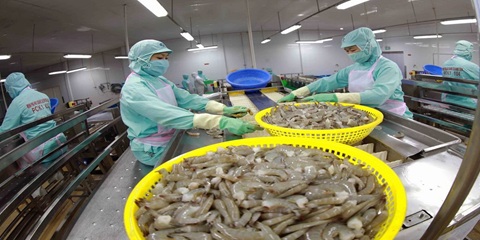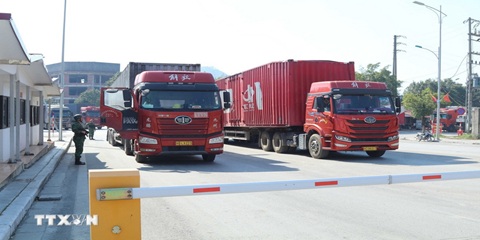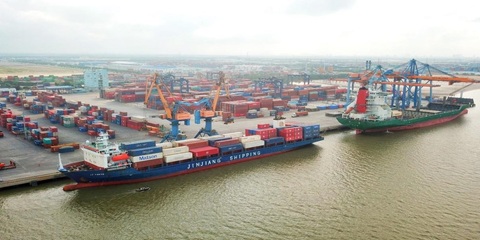Want to be in the loop?
subscribe to
our notification
Business News
NECESSARILY IMPROVING INSTITUTIONS AND POLICIES FOR CREATIVE ECONOMY ADVANCEMENT
Despite remarkable strides in socioeconomic development, including economic growth, Vietnam continues to grapple with issues pertaining to the quality and sustainability of this growth. The country’s economic expansion is still heavily dependent on the augmentation of input resources and industries that are labor and resource-intensive. The influence of elements directly associated with enhancing quality, labor productivity, competitiveness, and innovation has not met anticipated standards.
Dr. Tran Thi Hong Minh, President of the Central Institute for Economic Management (CIEM), said that Vietnam is advancing with the vision of becoming an upper-middle income developing country by 2030 and a high-income state by 2045. To realize this vision and development goal, maintaining high economic growth is a prerequisite. Nevertheless, Vietnam has faced major challenges with the traditional growth model based on increasing capital, unskilled labor, land, and natural resources which have reached their limits.
“In that context, we must constantly make better changes, specifically in thinking, methods and models to “create” new spaces for economic growth,” she added.
According to a CIEM report, Vietnam’s strengths in creative economic development are rich and diverse cultural heritages; young, dynamic and technologically proficient workforce; and positive policy changes towards new economic models. Its weaknesses in this process are mainly funding resources, especially in traditional creative fields; insufficient skills for the creative economy in many creative groups (especially middle-aged and elderly people, women and poor localities; and inadequacies in "hard" and "soft" infrastructure for creative economic development.
Vietnam has important opportunities for creative economic development, thanks to digital transformation, strong tourism recovery and growth, a relatively large domestic market, and intensive international cooperation. The adoption of new technologies in the Fourth Industrial Revolution has opened up many new opportunities for the creative economy, many new ways to produce, distribute and generate income from contents. Disruptive technologies have made creative industries investable choices in many emerging markets. Digitalization can also have a positive impact on the protection of creative assets. Vietnam has made efforts to access creative industries and services.
According to a CIEM research, Vietnam has initially had a policy framework for creative economic development. Existing policy groups include both general policies and specific policies for some sectors. The scope of existing policies is relatively wide, from tax incentives, science and technology policies to competition policies and intellectual property protection.
However, policies for the creative economy are only specific in some industries, not adjusted in time to match the new context of those industries while many creative activities still lack regulatory frameworks and laws.
Through local surveys, the knowledge of the creative economy is different from locality to locality, with some even likening the creative economy as innovations and creativity, said Dr. Minh.
Vietnam needs to learn experiences in creative economic development from both developed and developing countries, like approaching creative economic development based on the insightful knowledge of this economic model, building and perfecting institutions and policies for the creative economy, promoting good examples, completing theoretical knowledge and information on measuring the creative economy, attracting talents and developing the education and training system for the creative economy and developing creative industrial networks and clusters.
“More importantly, we need to focus on realizing our ideas and creativity and protecting intellectual property from creative work and the creative economy that has shown immense potential, even unlimited,” she noted.
To develop the creative economy in Vietnam in the coming time, according to CIEM, Vietnam needs to complete a solid policy framework to nurture the creative economy while creating space, motivation and composure for creative actors. At the same time, the country is necessary to increase investment in digital infrastructure and technology, enhance education and skills training development, and boost cooperation and connection.
In particular, Vietnam needs to continue to develop domestic and international markets for creative products and strengthen sustainability and social responsibility in creative businesses.
Source: VCCI
Related News

VIETNAM’S SEAFOOD EXPORTS HIT OVER US$10 BILLION IN JAN-NOV
Seafood export revenue in November alone amounted to nearly US$990 million, up 6.6% year-on-year. Key product groups posted solid gains. Shrimp exports rose 11.7% to over US$385 million, supported by strong demand for whiteleg shrimp and lobster. Tra fish shipments increased 9.7% to almost US$197 million, while marine fish, squid, and mollusk exports maintained their recovery.

VIETNAM’S AGRO-FORESTRY-FISHERY EXPORTS HIT NEW RECORD IN JAN-NOV
Vietnam’s agro-forestry-fishery export revenue reached an estimated US$64.01 billion in the first 11 months of 2025, up 12.6% year-on-year and surpassing the full-year record of US$62.4 billion set in 2024. Agricultural exports reached US$34.24 billion, up 15% year-on-year, while livestock products brought in US$567.4 million, a 16.8% increase. Seafood exports rose 13.2% to US$10.38 billion, and forestry products earned US$16.61 billion, up 5.9%.

HANOI REPORTS RECORD-HIGH BUDGET REVENUE IN 2025
Hanoi’s budget revenue is estimated to reach VND641.7 trillion in 2025, the highest level ever recorded and nearly 25% above the revised target, according to a report by the municipal government. Data from the city’s socioeconomic performance review shows that total state budget collections in 2025 are projected to reach 124.9% of the adjusted plan and rise 24.9% from 2024, the Vietnam News Agency reported.

VIETNAM, CHINA TO PILOT TWO-WAY CARGO TRANSPORT AT LANG SON BORDER
Vietnam and China will launch a one-year pilot program on December 10 to allow two-way cargo transport through the Huu Nghi–Youyi Guan international border gates in Lang Son Province, reported the Vietnam News Agency. The Dong Dang-Lang Son Economic Zone Management Board said the trial aims to reduce transport costs and improve customs clearance capacity.

VIETNAM’S IMPORT-EXPORT VALUE NEARS US$840 BILLION IN JAN-NOV
The total value of Vietnam’s imports and exports was nearly US$840 billion between January and November this year, the highest level ever recorded, according to the National Statistics Office. In its latest report on the country’s socio-economic performance, the National Statistics Office highlighted a series of positive economic indicators, with trade emerging as one of the strongest drivers of growth.

OVER 19 MILLION INTERNATIONAL VISITORS COME TO VIETNAM IN JAN-NOV
Vietnam received more than 19.1 million international visitors in the first 11 months of 2025, a 20.9% increase year-on-year and the highest level ever recorded, according to the National Statistics Office. The figure surpasses the full-year record of 18 million arrivals set in 2019, before the Covid-19 pandemic. Nearly two million foreign visitors arrived in November alone, up 14.2% from October and 15.6% from the same period last year.
























